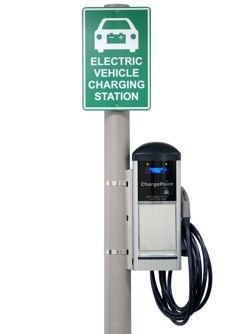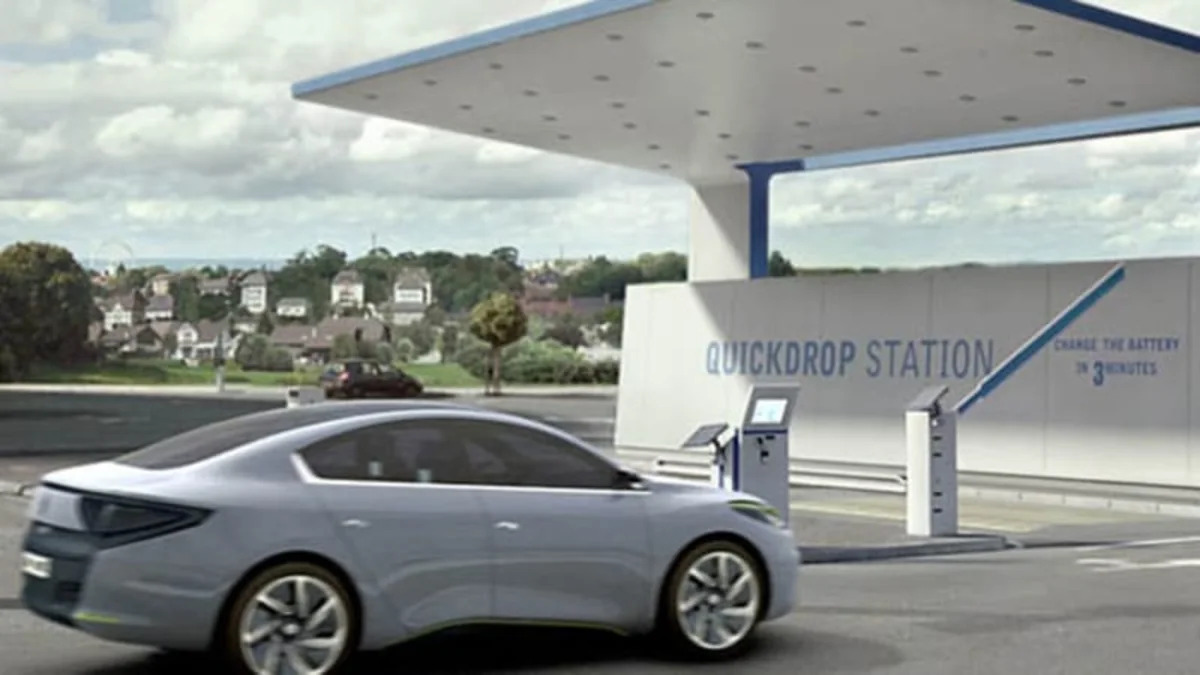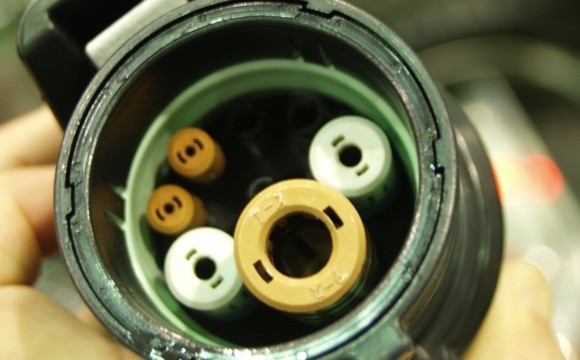Renault Zero Emission line-up - Click for high-res image gallery
 Among the many claimed advantages of electric vehicles are the ability to "refuel" your vehicles at home, never visiting a gas station again. In principle, the only thing you need to "fuel" an EV is a working plug. However, in life, few things ever turn out to be as simple as they might appear on the surface. For example think about your cell phone. If, like most of us here at ABG, you have had multiple different phones over the years, you have of course noted that every one of them seems to have a different and unique charging adapter along with a completely different battery.
Among the many claimed advantages of electric vehicles are the ability to "refuel" your vehicles at home, never visiting a gas station again. In principle, the only thing you need to "fuel" an EV is a working plug. However, in life, few things ever turn out to be as simple as they might appear on the surface. For example think about your cell phone. If, like most of us here at ABG, you have had multiple different phones over the years, you have of course noted that every one of them seems to have a different and unique charging adapter along with a completely different battery.
In a small hand-held, pocketable device like a phone, it would seem that standardizing batteries and chargers would be a relatively simple thing to do and yet it has only been relatively recently that most phones have begun converging on mini-USB connector standard. Batteries, of course, are an entirely different matter. Now imagine expanding these problems by several orders of magnitude and applying electrification to a car. Cars live in a greater variety of environments and are expected to last a lot longer than the typical consumer electronics device (do you still have your phone from six years ago?). Read on after the jump to learn more about how the problem of charging is being addressed.
The first and most important element is the charging plug. Most EVs of the recent past, including most home-built conversions, have utilized standard household plugs. While this may seem an easy solution, it is actually quite complex. Most conversions are designed to charge at 110V, which is fine for cars that have limited capacity and lead acid batteries. As lithium batteries with higher capacities become more prevalent, they will need faster charging. As MINI E drivers learned earlier this year, 110V just isn't going to cut it.
All this means we need a charging solution that can handle 220V or more. There are multiple types of standard 220V plugs for devices like dryers, stoves, etc. None of these are designed for high numbers of insertion cycles. We've all experienced 110V devices like vacuum cleaners where the pins get bent and sockets get loose over time. This is not acceptable on a car where the car will typically be plugged and unplugged daily and often several times a day. The plug has to be able to withstand thousands of insertion cycles. Given that cars have to operate everywhere from deserts to extreme winter and jungles, environmental sealing is critical as well.
When GM built the EV1 in the 1990s it tried to address these issues by using a paddle with induction charging capability. For reasons that we will get to shortly, that approach is not being used for the new era of EVs. Instead, automakers have collaborated with suppliers through a Society of Automotive Engineers task force to produce a common connector under the J1772 standard (above).
This plug is designed to withstand at least 10,000 insertions/removals with seals that survive the life of the car. It also supports single phase charging at up to 240 V and 70 A. Perhaps most importantly, it also has support for vehicle to infrastructure communications. This is something that no previous connectors, including the EV1 paddle, supported.
Since affordable electric vehicles will have limited operating ranges for the foreseeable future, they are seen as being most useful in urban environments. The problem is that many people who live in urban environments don't necessarily have garages to park and plug in to. For that reason, many local governments – e.g., London, Santa Monica– are looking at building or already have built networks of curb-side charging stations. While cities can afford to offer some free charging today to EV drivers because they are few and far between, this situation won't continue. If EVs become prevalent, drivers will have to pay for electricity.
 That's where the communication link comes into play. The comms link will allow the car to identify itself to the charger/grid so that the driver can be billed. Some companies, like Coulomb Technologies, are working on networks of charging stations and plan to offer subscription plans similar to mobile phone service to pay for charging. The communications system will facilitate this. Even when people are charging at home, the link will allow future smart meters to manage when a car is being charged so that drivers can get the lowest cost during off peak hours.
That's where the communication link comes into play. The comms link will allow the car to identify itself to the charger/grid so that the driver can be billed. Some companies, like Coulomb Technologies, are working on networks of charging stations and plan to offer subscription plans similar to mobile phone service to pay for charging. The communications system will facilitate this. Even when people are charging at home, the link will allow future smart meters to manage when a car is being charged so that drivers can get the lowest cost during off peak hours.
Most of the major automakers have committed to using the J1772 connector for charging (More info: how GM will use J1772 with the Chevy Volt). One thing these connectors don't support is 480 V charging. This higher voltage system is being proposed for quick charges with some types of batteries. To support this Nissan will actually equip its upcoming LEAF EV with two connectors, the J1772 and second one for 480V charging. However, before anyone can use this, special quick charge stations will have to be installed at places like businesses and, perhaps, existing gas stations.
The final possibility for the near- to mid-term is battery swapping. There are a variety of problems with this idea that will limit its utility any time soon. First is one of the same issues facing phones: proprietary battery packs. Because battery packs for cars are so large, automakers have to work hard to package them in a vehicle to limit intrusion on passenger space. They are often being incorporated into the structure of the car, making swapping them impossible. Finally, there is the same issue of the connectors that faces charging coupler. The battery connection, is designed for relatively few insertions.
All of these limit the utility of quick battery changing systems. So far, Better Place is the only company proposing such systems and Nissan-Renault is the only automaker that has shown any interest in supporting battery swapping. Other automakers cite the fact that battery technology is still evolving too quickly to commit to standard battery pack form factors along with the previously mentioned issues.
Looking farther out, researchers are still looking at inductive charging as well as mechanisms to recharge vehicles on the go, perhaps from cables or slots embedded in roadways. This however would require huge infrastructure investments and would create many new technical problems. Solar is another possibility, but it wouldn't be useful at night. Even during the day, solar cells don't have enough conversion efficiency to power a car with a panel small enough to fit on a car.
Any way you look at it, it appears we will be living in interesting times in the coming years.



Sign in to post
Please sign in to leave a comment.
Continue